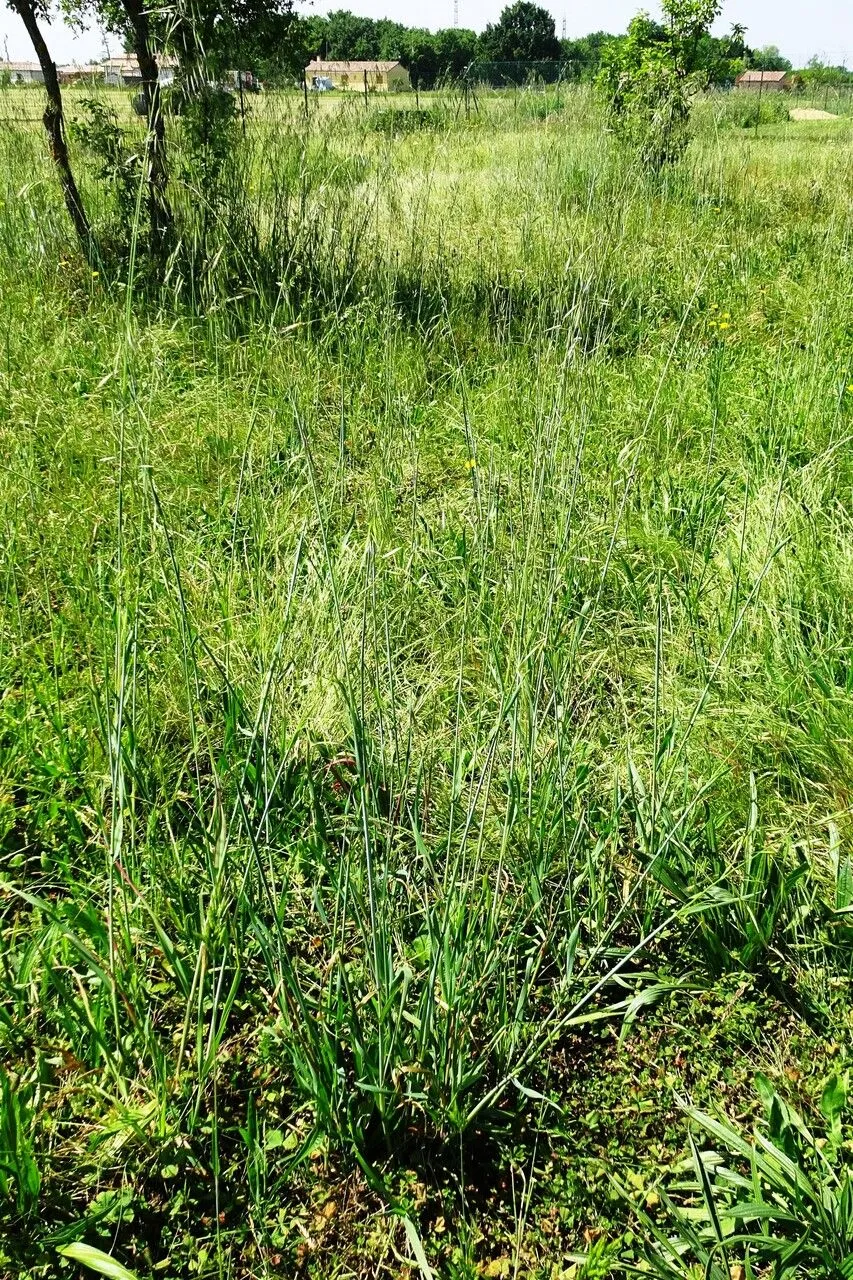
Author: Pott ex Link
Bibliography: J. Bot. (Schrader) 1799(2): 315 (1800)
Year: 1800
Status: accepted
Rank: species
Genus: Avena
Vegetable: False
Observations: Medit. to C. Asia and W. Himalaya
The Yatheroo oat, scientifically known as Avena barbata, is an intriguing member of the Poaceae family. First documented by Pott ex Link in “J. Bot. (Schrader) 1799(2): 315 (1800)”, this species has captured the attention of botanists and plant enthusiasts alike for centuries.
Habitat and Distribution:
This plant finds its natural habitat stretching from the Mediterranean region across Central Asia to the western Himalayas. Its adaptability to a diverse range of climates and soil types highlights its hardy nature. The Yatheroo oat thrives particularly well in temperate regions where it is often observed growing in abundance.
Morphological Characteristics:
Yatheroo oat exhibits the typical traits of grasses within the Poaceae family. It generally has slender, erect stems that can vary in height, but often stand prominently among native flora. The leaves are narrow and elongated, sharing the quintessential grassy texture and appearance. When in bloom, it presents a subtle yet attractive display of small, clustered flowers, which eventually give way to its oat-like seeds.
Ecological Significance:
The Yatheroo oat plays a crucial role in its ecosystems. As a pioneer species in disturbed soils, it helps prevent erosion and enriches the soil, paving the way for other plant species to thrive. Its seeds provide food for various bird species, while the plant itself offers habitat and nourishment to countless insects.
Utilization and Importance:
Historically, various species within the Avena genus have been cultivated for their nutritional value. While not as prominent as the common oat (Avena sativa) in agriculture, Avena barbata has nonetheless contributed to the genetic diversity and resilience of cultivated oats. Its resilience and ease of growth make it a subject of interest for ongoing agricultural research, particularly in the context of sustainable farming practices and climate adaptability.
In conclusion, Avena barbata, or the Yatheroo oat, is more than just a humble grass. Its extensive distribution from the Mediterranean to the western Himalayas, coupled with its ecological benefits and potential agricultural importance, make it a noteworthy species in the rich tapestry of the Poaceae family.
Deu: bart-hafer, barthafer
Dan: skæg-havre
Eng: slender oat, yatheroo oat, barbed oat
Por: aveia
Spa: avena barbada, ballueca
Fra: avoine barbue
Hun: szakállas zab
Swe: skägghavre
Cym: ceirch coliog, ceirchen goliog
En: Yatheroo oat, Barbed oat, Slender oat
Ca: Cugula petita
Da: Skæg-havre
Fr: Avoine barbue
De: Barthafer, Bart-Hafer, Sand-Hafer
He: שיבולת-שועל מתפרקת
Hu: Szakállas zab
It: Avena barbata
Pt: Aveia
Pt-br: Aveia-barbada, Aveia-selvagem, Balango
Es: Ballueca, Cebadilla, Avena barbada, Avena erizada, Avena morisca, Avenilla
Sv: Skägghavre
Cy: Ceirch Coliog, Ceirchen Goliog
© copyright of the Board of Trustees of the Royal Botanic Gardens, Kew.
© copyright of the Board of Trustees of the Royal Botanic Gardens, Kew.
© copyright of the Board of Trustees of the Royal Botanic Gardens, Kew.
Taken May 24, 2022 by SASTRE Isern (cc-by-sa)
Taken Jul 8, 2017 by Javier López (cc-by-sa)
Taken May 30, 2021 by Alain Bigou (cc-by-sa)
Taken May 30, 2021 by Alain Bigou (cc-by-sa)
Taken Apr 1, 2020 by marcoteresa (cc-by-sa)
Taken Apr 29, 2022 by Raffaello 2 Garofalo (cc-by-sa)
Taken Apr 28, 2020 by Emanuele Santarelli (cc-by-sa)
Taken May 30, 2021 by Alain Bigou (cc-by-sa)
Taken May 30, 2021 by Alain Bigou (cc-by-sa)
Taken Jul 8, 2017 by Javier López (cc-by-sa)
Taken May 6, 2022 by ojancos (cc-by-sa)
Taken May 30, 2021 by Alain Bigou (cc-by-sa)
Taken Apr 29, 2022 by Raffaello 2 Garofalo (cc-by-sa)
Taken Apr 18, 2013 by Tela Botanica − Marie PORTAS (cc-by-sa)
Taken May 3, 2021 by ciel Bleu (cc-by-sa)
Taken Apr 29, 2022 by Raffaello 2 Garofalo (cc-by-sa)
Taken Apr 20, 2022 by Raffaello 2 Garofalo (cc-by-sa)
Taken May 26, 2022 by Gianni Del Bufalo (cc-by-sa)
Taken May 13, 2018 by Lugifa Lugifa (cc-by-sa)
Taken May 24, 2022 by SASTRE Isern (cc-by-sa)
Taken May 3, 2021 by Uxeli (cc-by-sa)
Taken Jul 12, 2020 by Perez Ivan (cc-by-sa)
Taken Mar 23, 2017 by Tela Botanica − Errol VELA (cc-by-sa)
Taken Mar 23, 2017 by Tela Botanica − Errol VELA (cc-by-sa)
Taken Apr 28, 2020 by Emanuele Santarelli (cc-by-sa)
Taken May 23, 2011 by Tela Botanica − Bertrand BUI (cc-by-sa)
Taken Jun 9, 2011 by Tela Botanica − Bertrand BUI (cc-by-sa)
Taken Jun 9, 2011 by Tela Botanica − Bertrand BUI (cc-by-sa)
Taken Jan 1, 1970 by Photoflora – L’Abbé COSTE (©)
Taken Oct 25, 2016 by Tela Botanica − Marcel ETIENNE (cc-by-sa)
Growth habit: Graminoid
Ph maximum: 7.5
Ph minimum: 7.0
Light: 8
Atmospheric humidity: 2
Bloom months: [‘may’, ‘jun’, ‘jul’]
Soil nutriments: 5
Family: Myrtaceae Author: (F.Muell.) K.D.Hill & L.A.S.Johnson Bibliography: Telopea 6: 402 (1995) Year: 1995 Status:…
Family: Rubiaceae Author: Pierre ex A.Froehner Bibliography: Notizbl. Bot. Gart. Berlin-Dahlem 1: 237 (1897) Year:…
Family: Sapindaceae Author: Koidz. Bibliography: J. Coll. Sci. Imp. Univ. Tokyo 32(1): 38 (1911) Year:…
Family: Asteraceae Author: A.Gray Bibliography: Pacif. Railr. Rep.: 107 (1857) Year: 1857 Status: accepted Rank:…
Family: Fabaceae Author: Medik. Bibliography: Vorles. Churpfälz. Phys.-Ökon. Ges. 2: 398 (1787) Year: 1787 Status:…
Family: Aspleniaceae Author: (Cav.) Alston Bibliography: Bull. Misc. Inform. Kew 1932: 309 (1932) Year: 1932…